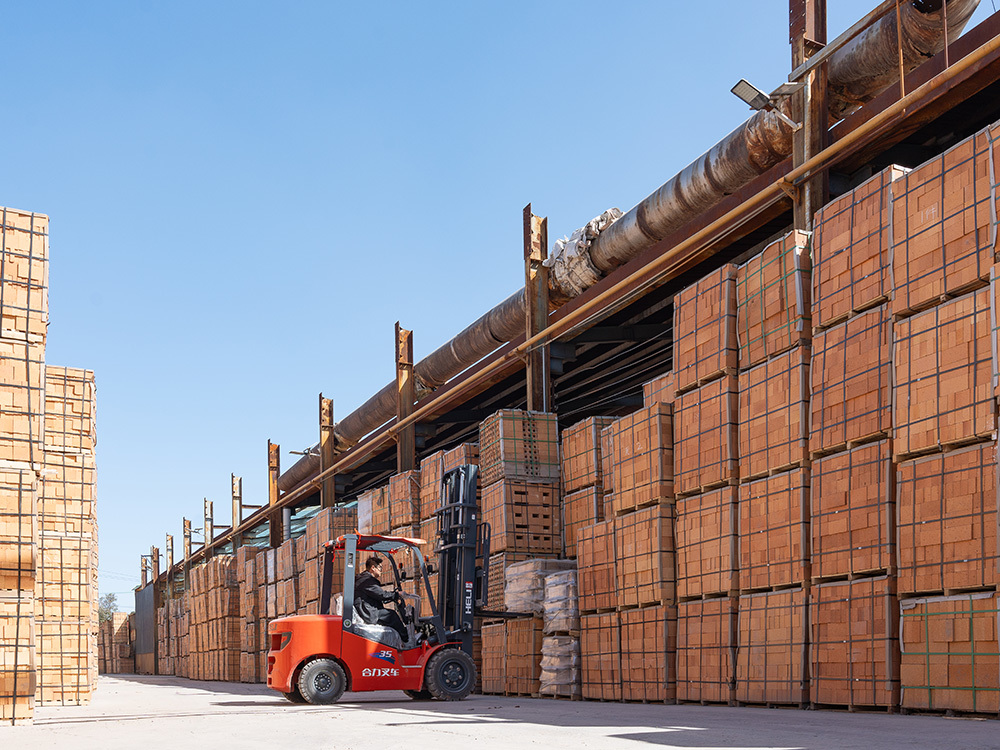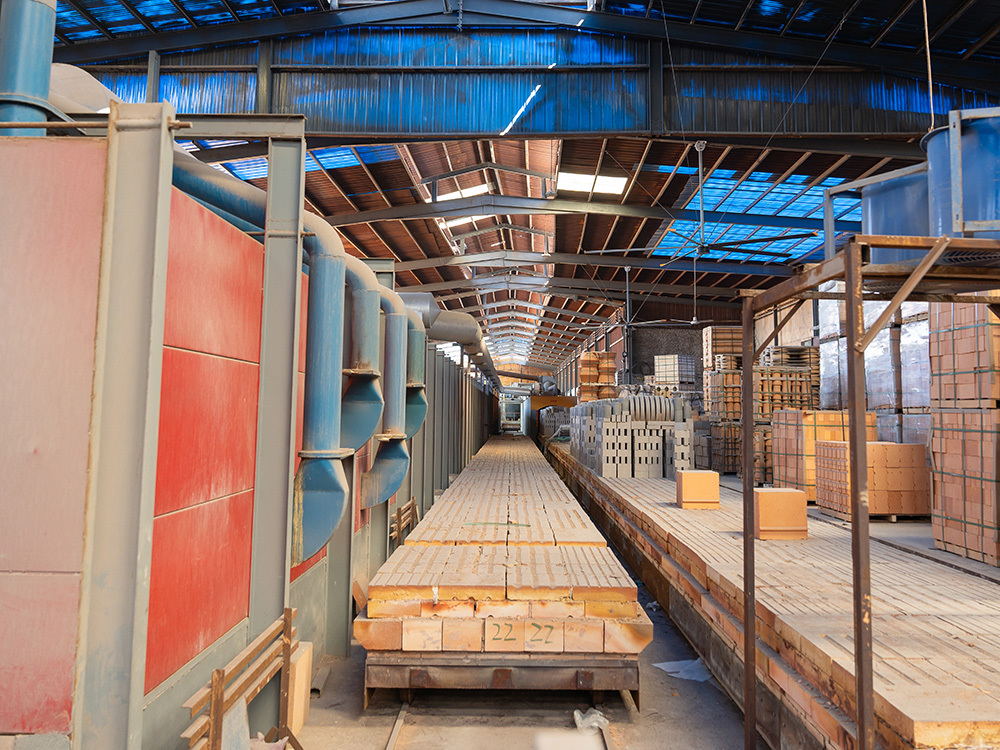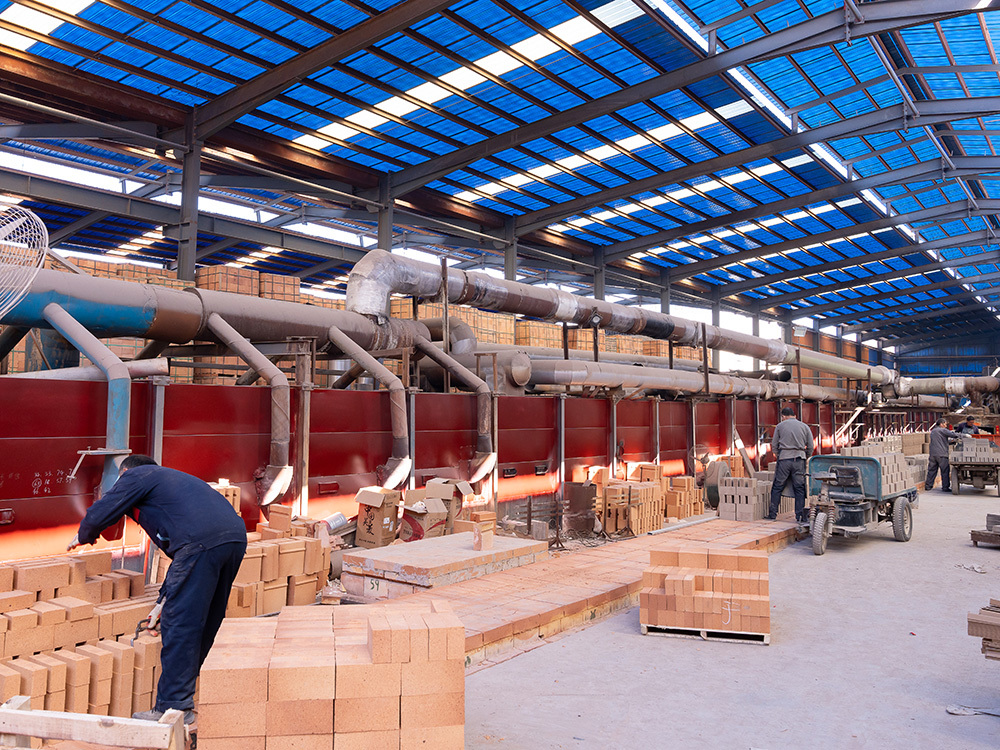Why refractory bricks can be refractory
Apr 25,2024
Refractory brick is an inorganic non-metallic material with a refractoriness of not less than 1580 ℃. It is the basic material for high-temperature technology, the structural material for thermal equipment such as masonry kilns, and the functional material for manufacturing some high-temperature containers and components or for special functions. The successful use of refractory bricks under high temperature must have good organizational structure, thermal properties, mechanical properties and performance, that is, high refractoriness, load softening temperature, thermal shock resistance and chemical erosion resistance, in order to withstand various physical and chemical changes, to meet the requirements of thermal equipment and components.
Then there is a question, why can refractory bricks withstand high temperatures? Why can't other materials withstand high temperatures? What raw materials are made.
1. from raw material analysis
The raw materials used in the production of refractory bricks are generally natural ores, such as bauxite, silica, magnesite and other raw materials after processing and manufacturing of different properties of refractory bricks, such as aluminum and silicon refractory bricks, silica refractory bricks and magnesia three types of refractory bricks.
Elect to use bauxite as raw material production of aluminum-silicon refractory brick is its main component is alumina, hydrated alumina containing impurities, is a kind of earthy mineral, insoluble in water, soluble in sulfuric acid, sodium hydroxide solution. Mainly used for aluminum smelting, and the production of refractory materials, because the high bauxite clinker refractoriness up to 1780 ℃, strong chemical stability, good physical properties. The bauxite is purified at high temperature to produce a main crystal phase of corundum with alumina content greater than 90%, which can produce ultra-high temperature refractory brick fused with zirconium corundum brick.
The raw material for making siliceous refractory bricks is silica, the main component of which is SiO2, the higher the content, the higher the refractoriness. The most harmful impurities are AL2O3, K2O, Na2o, etc. The production of silicon brick is based on natural silica as raw material, plus appropriate amount of mineralizer, to promote the transformation of quartz in the body into tridymite. Slow firing at 1350 to 1430°C in a reducing atmosphere. High temperature strength. The load softening temperature is 1620 degrees C.
Magnesite is the main raw material for the production of magnesia refractory brick, its basic component is MgO, magnesium oxide has a high degree of refractory insulation. It can be converted into crystal by high temperature burning above 1000 ℃, sintered magnesia when it rises to 1500-2000 ℃, and then magnesia brick or magnesia ramming material can be made by crushing to a certain particle size or powder. Magnesia refractory brick belongs to alkaline refractory brick, which has strong resistance to alkaline slag, but cannot resist the erosion of acidic slag. Its refractoriness is above 2000 ℃, but its load softening point is only 1500 ℃, and its thermal shock stability is poor.
2. belongs to inorganic non-metallic materials
Inorganic non-metallic materials and organic polymer materials and metal materials are listed as three major materials. The characteristics of ordinary inorganic metal materials are: high compressive strength, high hardness, high temperature resistance and corrosion resistance. In addition, ceramics have excellent characteristics in corrosion resistance and refractory materials. However, compared with metal materials, it has low breaking strength and lacks ductility. Compared with polymer materials, the manufacturing process of high density is complicated.
3. forming and sintering
Refractory brick production process is through the process of mineral crushing-raw material mixing-mechanism molding-high temperature firing finally produce a product resistant to high temperature, in which the body in the high temperature tunnel kiln sintering temperature will be higher than the load softening temperature of its products generally sintering temperature of more than 1500 degrees C. The refractoriness is above 1770 ℃. Good high temperature resistance. Refractory bricks are mainly used for building steel-making furnaces, glass furnaces, cement rotary furnaces and other kiln linings.
Summary; Refractory bricks can resist high temperature mainly rely on three reasons,
① The raw material minerals used in refractory bricks have high fire resistance.
② As an inorganic non-metallic material, the level of its use is determined by the level of raw materials.
③ The finished product is in the high temperature tunnel kiln after the high temperature temperature above 1500 ℃, so the refractory brick can resist high temperature and is suitable for high temperature kiln lining.
RELATED INFORMATION
Why refractory bricks can be refractory
2024-04-25
Properties and abrasion resistance of refractory bricks
2024-04-25
What problems should be paid attention to when building refractory bricks?
2024-04-25




